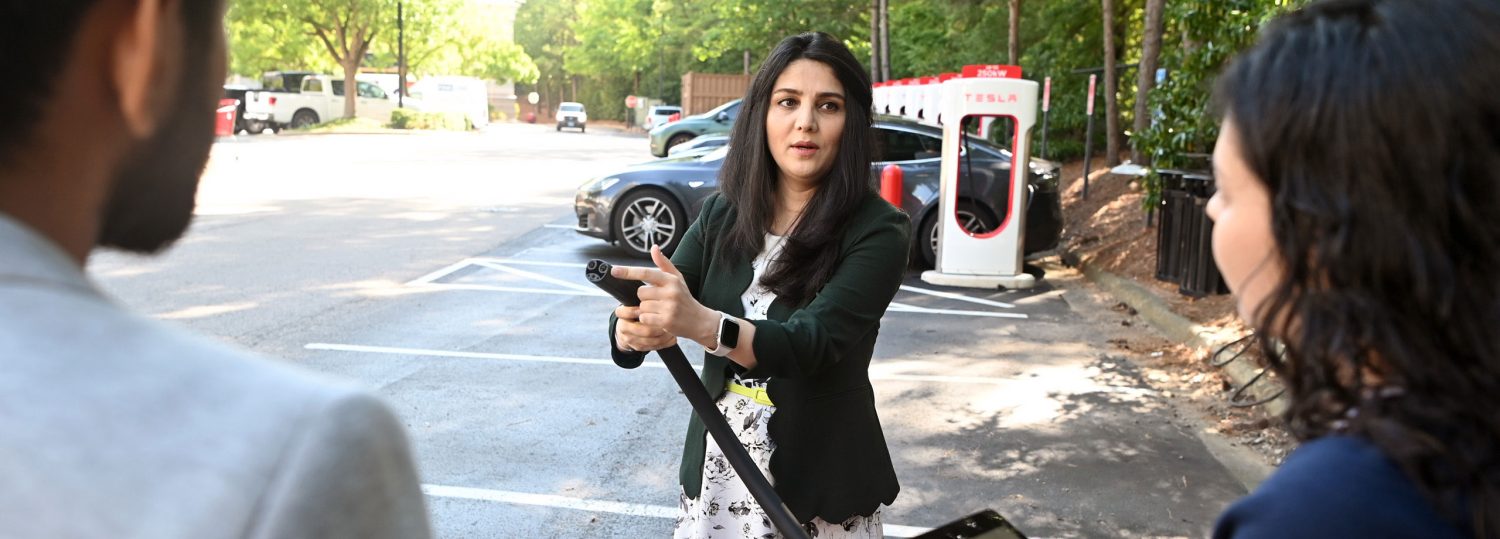It’s possible, but Duke Energy says it’s ready to adapt to a spike in demand by beefing up the grid and giving consumers incentives to charge vehicles during off-peak hours. Power concerns and lack of public infrastructure could be stifling widespread EV adoption.
Original article by Liz McLaughlin at WRAL News
Randy Wheeless, a communications manager for Duke Energy, says the utility is beefing up the grid to prepare for the increase in demand for electric vehicles.
“Whether the growth of EVs happens all at once or over a period of 20 years, we are planning to be ready because we know it’s headed that direction,” Wheeless said.
One of the biggest concerns is managing demand during peak periods of use.
“If everyone charges at 5 p.m. on a hot summer day with the air conditioner going, that can really tax the system,” Wheeless said.
According to Duke Energy, about 60% of North Carolina’s electricity generation is currently carbon-free. However, if more power from fossil fuels is needed to meet demand, that could impact how climate-friendly EVs are.
Duke Energy is testing methods to avoid that, including offering savings to customers to charge during off-peak periods. Customers in the pilot program can get a $10 credit or pay a flat rate each month for unlimited charging during restricted hours.
“What we want to do is to manage the charging, so we don’t have this great influx of new demand on the system that makes us have to build new power plants,” Wheeless said.
Durham resident Sami Grover is one of more than 31,000 electric vehicle owners in North Carolina.
“I enjoy finding ways to make my carbon footprint smaller,” Grover said. “Fighting climate change is a collective journey.”
While the adoption rate is growing, EVs still only make up about .5% of the automobile market share in the state.
Many potential EV buyers say they are hesitant to make the switch because of inconsistent charging infrastructure. North Carolina State University engineering professor Leila Hajibabai calls it “range anxiety.”
“Some people may be more sensitive to travel time to get to facilities, wait time at charging facilities, and the pricing scheme,” Hajibabai said.
Hajibabai and other engineers at NC State are developing models to weigh challenges, including where to deploy charger locations and how to make them more efficient, ahead of installing more chargers on North Carolina roadways in the coming year.
Duke Energy is planning to install 200 new chargers across the state, according to Wheeless.
In August, the North Carolina Department of Transportation submitted a plan for the nearly $109 million heading to the state as part of the National EV Infrastructure (NEVI) program, stemming from last year’s Bipartisan Infrastructure Law, including the installation of 33 new fast-charge stations.
Sixteen of the proposed locations are east of Raleigh, supporting coastal travel and hurricane evacuation feasibility for EV drivers with the potential to boost EV adoption in the eastern part of the state. Over half of the recommended locations are in disadvantaged communities, in alignment with the Justice40 Initiative aiming to deliver at least 40% of federal investment benefits in climate and clean energy to underserved areas.
There has been growing concern about equity in EV infrastructure, with those in metro areas and homeowners having greater access to the technology.
“Those without access to a garage and electricity upgrades must rely on public charging, if it’s available to them, which is often much more expensive than the rate at home,” said Heather Brutz, Clean Transportation Program Director with the NC Clean Energy Technology Center.

